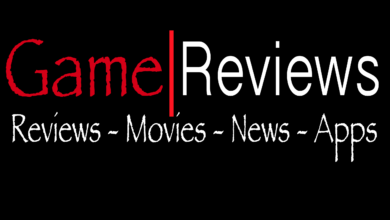Mastering the Product Game: Unlocking the Secrets Behind Product Owner and Product Manager Roles

Ah, the age-old debate of “Product Owner vs. Product Manager”: a tale of roles, responsibilities, and the subtle art of herding the digital cats in the ever-evolving landscape of technology. Let’s break it down with a pinch of humor, shall we?
Introduction
In the digital product creation arena, two champions often emerge: the Product Owner and the Product Manager. Both pivotal, yet often shrouded in a mist of confusion about who does what, why, and when.
Background
Originating from Agile and Scrum methodologies, the Product Owner role was birthed to ensure that the development team delivers value. Think of them as the voice of the customer within the team, laser-focused on the “what” and “why” of the product features.
On the flip side, the Product Manager role predates Agile and is broader, often encompassing not just the “what” and “why” but also the “when” and “for whom.” They strategize the product’s future, market positioning, and overall success.
Product Owner:
- Focus: Directly on the development team’s backlog.
- Responsibilities: Defining user stories, prioritizing the backlog, and ensuring the development team understands the project scope at a granular level.
- Objective: To meet the end-users’ needs through detailed requirements and prioritization.
 Product Manager:
Product Manager:
- Focus: On the product’s overall success in the market.
- Responsibilities: Market research, product vision and strategy, roadmap development, and stakeholder management across different teams.
- Objective: To ensure the product meets market needs, aligns with business goals, and stays competitive.
Case Studies/Examples
Spotify: Harmonizing Product Roles in a Stream of Innovation

The Scenario: In the high-tempo world of music streaming, Spotify stands out not just for its vast library but for its user-centric features and agile development practices. The company’s structure is a prime example of how distinct roles for Product Owners and Product Managers can drive innovation and adaptability.
How They Do It: Spotify organizes its development teams into “Squads,” each with a specific focus area, like playlist curation, user interface, or social sharing features. A Product Owner leads each Squad, ensuring that the team’s work aligns closely with user needs and immediate product goals.
Product Owner Role at Spotify: The Product Owners at Spotify are deeply embedded in the day-to-day operations of their Squads. They prioritize the backlog, define user stories, and work closely with designers and developers to make sure that every feature or update is finely tuned to the user’s needs.
Product Manager’s Symphony: Parallel to the Product Owners, Spotify’s Product Managers (sometimes referred to as “Product Leads”) orchestrate the longer-term vision and strategy. They conduct market research, analyze trends in the music industry, and work on cross-Squad initiatives to ensure Spotify stays ahead of the curve. Product Managers at Spotify are responsible for aligning the company’s broad objectives with each Squad’s work, facilitating communication between Squads, and steering the product towards market success.
Outcome: This clear delineation and collaboration between roles have enabled Spotify to continuously innovate while maintaining a high level of user satisfaction. Features like “Discover Weekly” and “Spotify Wrapped” are testaments to Spotify’s ability to blend data-driven insights with creative product features, a harmony made possible by the effective partnership between Product Owners and Product Managers.
Atlassian: Crafting Software Masterpieces with Clear Roles

The Scenario: Atlassian, the powerhouse behind products like Jira, Confluence, and Trello, has mastered the art of software development and collaboration tools. In a landscape where team coordination and project management are key, Atlassian’s approach to product development roles is instructive.
How They Do It: Atlassian places a strong emphasis on role clarity between Product Managers and Product Owners. The company leverages these roles to ensure that not only are the technical aspects of product development well-handled but that the product also evolves in a way that serves the market’s and customers’ broader needs.
Product Owner Role at Atlassian: Within the Scrum teams, Product Owners at Atlassian are the champions of the backlog, prioritizing tasks based on immediate technical requirements and user feedback. They are instrumental in translating the Product Manager’s strategy into actionable tasks, ensuring that the development team can execute on them efficiently.
Product Manager’s Blueprint: Atlassian’s Product Managers focus on the bigger picture. They are responsible for the product’s overall direction, competitive positioning, and ensuring that the development work aligns with business goals. They work across teams to gather insights, define the product roadmap, and communicate the vision to stakeholders, including the development teams.
Outcome: This clear division of labor allows Atlassian to not only develop but continuously improve its suite of products in a way that meets the evolving needs of teams around the world. For instance, the launch of new features in Jira and Trello, aimed at enhancing remote collaboration, reflects the Product Managers’ strategic vision and the Product Owners’ ability to execute on that vision through focused development efforts.
Future Outlook: Navigating the Evolving Landscape
As we look toward the horizon of product development, the roles of Product Owner and Product Manager are set to evolve in intriguing ways. With the rapid pace of technological advancement and changing market demands, here’s what the future might hold:
1. Greater Role Fluidity: Startups and smaller companies are already seeing a blend of the Product Owner and Product Manager roles due to resource constraints. This trend could extend to larger organizations as they seek to increase agility and foster a deeper understanding of customer needs across the product development lifecycle.
2. Increased Emphasis on Data and AI: The integration of data analytics and artificial intelligence in product development will likely require Product Owners and Managers to become proficient in leveraging these tools. This means not just understanding user behavior but predicting future trends and needs, leading to more proactive and personalized product features.
3. Cross-functional Leadership: As products become more complex, the need for Product Owners and Managers to possess cross-functional leadership skills will grow. This includes understanding the technical aspects of product development, user experience design, and even marketing and sales strategies to ensure a cohesive product strategy that aligns with business goals.
4. Focus on Continuous Learning and Adaptation: The ability to quickly learn and adapt to new tools, methodologies, and market changes will become increasingly important. Continuous professional development in areas such as Agile methodologies, user experience, and strategic planning will be crucial for those in these roles.
5. Sustainability and Ethical Considerations: With growing awareness and concern for ethical tech development and sustainability, Product Owners and Managers will need to incorporate these considerations into their decision-making processes, balancing business objectives with social and environmental impact.
Challenges/Controversies: The Road Ahead
The journey of defining and differentiating the roles of Product Owner and Product Manager is not without its bumps. Here are some of the key challenges and controversies that organizations face:
1. Role Overlap and Confusion: One of the biggest challenges is the overlap between the roles, which can lead to confusion and inefficiency. Organizations often struggle to clearly delineate responsibilities, leading to duplicated efforts or gaps in the product development process.
2. Scalability Issues:As companies grow, the scalability of having distinct roles for Product Owner and Product Manager comes into question. Finding the right balance between specialization and flexibility becomes a critical challenge for maintaining agility and responsiveness to market changes.
3. Interdepartmental Communication:Effective communication between Product Owners, Product Managers, and other stakeholders (such as sales, marketing, and customer support) is crucial but often difficult to achieve. Silos can develop, hindering the collaborative effort required for successful product development.
4. Keeping Up with Market and Technological Changes: The rapid pace of change in technology and consumer preferences can make it difficult for Product Owners and Managers to stay ahead. This requires a commitment to continuous learning and adaptation, which can be resource-intensive.
5. Ethical and Sustainability Challenges: As the importance of ethical considerations and sustainability grows, Product Owners and Managers may find themselves at the forefront of difficult decisions. Balancing short-term business goals with long-term societal impact poses a significant challenge.
Conclusion
The roles of Product Owner and Product Manager are critical to the success of product development in today’s fast-paced, technology-driven market. As these roles continue to evolve, embracing flexibility, continuous learning, and cross-functional collaboration will be key to overcoming challenges and seizing future opportunities. By addressing the controversies and challenges head-on, organizations can ensure their product development processes remain dynamic, responsive, and aligned with both business objectives and broader societal values.




